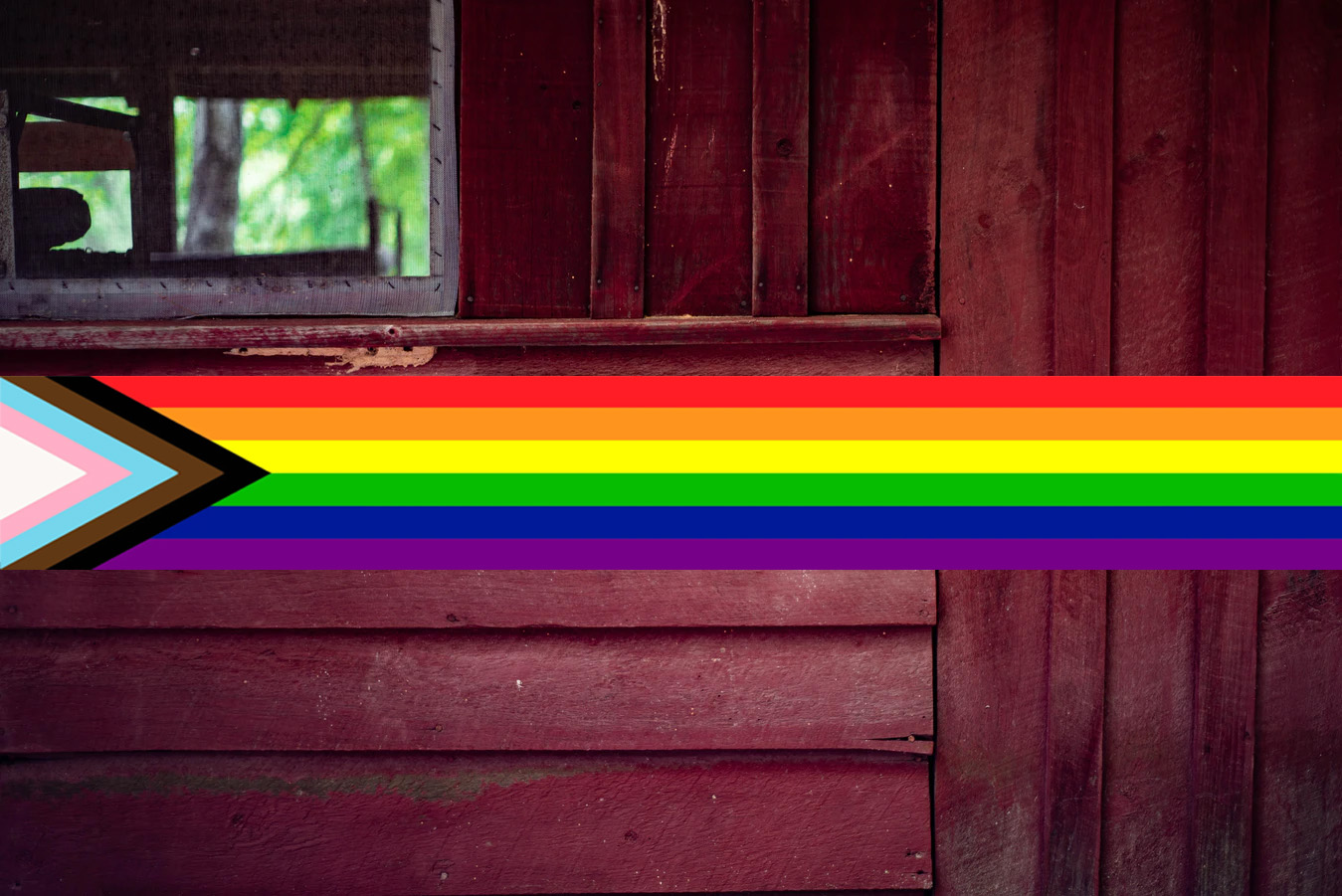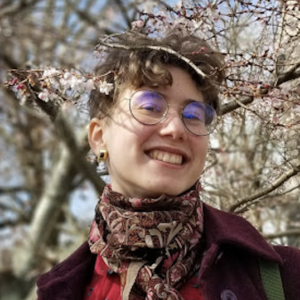Welcome to the Jewish Queeries Series, an advice column by and for Queer Jews through New Voices Magazine! You can submit your own questions for queer Jewish advice by clicking here. Stay tuned – your question may be chosen by our columnists.
Dear Jewish Queeries, I’m an out-and-proud queer Jew and I’m going to be a counselor at my summer camp soon. I want to work to make it more queer friendly. How do I do that?
This is a really important question that any summer camp should strive to address. I grew up as a queer person in a Jewish summer camp that had just begun the process of making itself more queer friendly. As a counselor I helped the transformation along, giving me some insight on what to do.
My summer camp was Camp Shomria, a camp for the youth movement Hashomer Hatzair, located in the Catskills. The camp focuses on youth leadership education. It was where I found my first queer friends. However, it wasn’t perfect. I felt uncomfortable in many spaces that encouraged cis-normativity and hetero-normativity. As a counselor I continued the push for more queer education and less gendered and heterosexualized spaces,while being out and visibly queer as I worked on staff.
As such, over the past year I have been working with my summer camp on a more official basis to make it queer friendly. It has not been easy as most of the people I interact with are not a part of the queer community but rather well-meaning allies. My experience may also be different from yours as you begin your process of summer camp inclusion work, as I also work with several other groups from across the globe who are each a part of my camp’s greater organization, trying to change the whole movement, not just an individual camp.
What I’ve found is that making a camp more queer friendly boils down to two things: visibility and advocacy. The rest is commentary.
Visibility
- Be yourself.
Be yourself, openly and unabashedly. Campers look up to their counselors. The more you act honestly and authentically, the more they will feel comfortable in their own skin. Being yourself is the greatest rebellion. Lead by example. Tell kids that they are wonderful because they exist by existing openly and fully for them.
I didn’t grow up with any queer role models and that’s always bothered me. I think it’s our job to be that role model for someone, be it making sure that campers who bind know how to do so safely or to be the person they can talk to without fear or worry. Being yourself signals to the campers that they can do the same around you.
- Normalize Queerness.
Being outside of a binary system of expression is not unusual. It never has been. Normalizing gender diversity is in fact necessary to create an enjoyable summer for all involved.
I remember, as a counselor, a time in which we created a space during our normal club time for a queer circle. Campers were encouraged to come and talk about being queer or ask questions as allies. The result was one camper surrounded by about five counselors. This camper was someone who had trouble being queer at home and she was so happy to have people to talk to but in hindsight, it was probably uncomfortable to have five pairs of eyes staring at you as you divulged all your inner thoughts.
Instead of creating explicit spaces, create normality. Start out every activity that has people who don’t know each other with pronoun-optional introductions. It may be helpful to also explain what a pronoun is for the younger and newer campers as you introduce yourself. You could say “Ok let’s go around in a circle, introduce your name, your pronouns (the terms you would like to be called when we talk about you like ‘he’ or ‘she’ or ‘they’) if you want, and if your eyeballs were made of ice cream what flavor would they be.”
Advocacy
- Encourage gender and sexuality diverse spaces.
Heteronormative spaces are places that assume their participants are straight, while cisnormative spaces assume that there are not trans people present or that gender exists in a binary. As we know, the world isn’t filled solely with heterosexual and cisgender people and dismantling spaces that encourage the idea that they are, will create a healthier environment in your summer camp on the whole.
My camp has a tradition of “Friday Night Dancing.” We all go into the dining hall and dance our hearts out for hours on end. But growing up, this weekly event was very heteronormitive. Girls were expected to dress in ways that would entice the boys into hooking up. As a camper, the counselors also dressed up for Friday Night Dancing, encouraged gossip in the cabins at night, and made it feel like there was a strong distinction between the girls and the boys. It made me feel that I also had to dress up for Friday Night Dancing – though for me this was a tuxedo t-shirt, Doc Martens, and shorts I got at the Children’s Place – and find a boy to hook up with.
When I became a counselor, other staff members and I began to recognize this tradition as a source of pressure for children to perform heterosexuality. Together we worked to dismantle it. We encouraged campers to just dress up in comfy dancing clothes and danced with them, introducing midnight snacks as a new tradition. It took barely a week of that summer to stop this sexualized expectation; the kids stopped focusing on what they wore to dance.
It’s not perfect. We still live in a heteronormative world and we can’t help what campers bring in. But it’s better.
The first step in dealing with addressing these spaces is to take note of what culture in your camp is hetero-normative or cis-normative. Afterwards you have to bring it to the attention of others around you. Criticize it, keep saying how alienating that culture can be. Keep talking about it until others start to talk with you and you can form a plan on how to deal with it. You never know, it might be as simple as wearing sweatpants.
- Encourage education on queer topics.
A great way to make a change is to hire an educational organization to give workshops for the staff before campers arrive. Keshet, a Queer Jewish organization, has a program to provide staff and board training at varying levels to fit the needs of your camp. Their training includes pronoun workshops, LGBTQ+ history, understanding terminology, and understanding LGBTQ+ belonging within Jewish communities. The Cornerstone Seminar, a part of the organization Foundation for Jewish Camp, also provides seminars for staff on creating queer spaces. You can’t make a summer camp queer friendly without a staff that has an understanding of basic queer topics, including the differences between gender, sex, presentation, and sexuality.
By the time I was a camper, my summer camp had already begun this process of education, both for staff and campers. This beginning came in the form of the genderbread person. This activity involved being given a piece of paper that had the printed image of a gingerbread person. Beside the figure were spectrums of gender identity, gender expression, biological sex, and sexual orientation. Nowadays, it’s more in vogue to use the Gender Unicorn graphic as there was some controversy around the gingerbread person. At the time it really opened my eyes to the vastness of human identity, but my camp became stuck in this educational tool to the point in which it began to erode. It turned into a space for younger kids to make their own gingerbread genderbread person with their own identities three years in a row, for older kids to be bored because they had already discussed these concepts the year before, and campers began to take questions of queer inclusion less seriously. It was only after we introduced a structure of LGBTQ+ education with a curriculum based on age in which the youngest kids used the genderbread person while the older kids learned about queer history and activism that we started to see better engagement and understanding from both counselors and campers.
- Encourage your camp to convert a bathroom into a non-gendered space.
This makes camp more comfortable for gender-diverse campers. The ideal solution would be a bathroom, in an easily accessible for all cabins location, in which there are both toilets and shower stalls. If this is not a solution that is available for you, a small change, albeit incomplete, is to convert a toilet-only bathroom to gender-neutrality.
- Advocate for non-gendered cabins or tents.
Many camps are beginning to create non-gendered cabins and tents. Places like Camp Tawonga in California, Habonim Dror’s Camp Moshava in Maryland, and URJ’s OSRUI have already begun making this change.
Give campers the option of sleeping in an all-gender cabin where non-binary, trans, and cisgender campers can all share a space without any pressure to conform while still having the option of gendered spaces available. If you do not have a separate space to change within your cabins or tents, a changing station is easily purchasable. Regardless of gender status it might be good to have a changing station for kids who want to change with privacy.
Summer camp is such a strong foundation within the Jewish American experience and it should be a place for all campers to feel like they can be themselves without hiding who they are. As queer Jews, the responsibility often falls on us to work to create the spaces we wished we had. It will be hard. We are working to dismantle generations of social norms. But nothing is going to change unless we help the younger generations feel comfortable in their own skins and advocate for their well-being. Wanting to make a change is the first step and I’m so glad that you made it. I hope this helped you find the strength and courage to do the rest. You are not alone.

